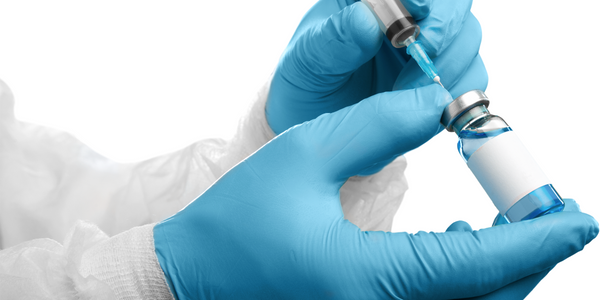Download PDF
HARVARD DRUG GETS A HEALTHY OUTLOOK with Inventory Optimization
Technology Category
- Analytics & Modeling - Predictive Analytics
- Functional Applications - Inventory Management Systems
Applicable Industries
- Healthcare & Hospitals
- Pharmaceuticals
Applicable Functions
- Procurement
- Warehouse & Inventory Management
Use Cases
- Inventory Management
- Predictive Replenishment
Services
- Software Design & Engineering Services
- System Integration
The Challenge
Despite tremendous growth in catalog products, Harvard Drugs’ buyers were still using Excel spreadsheets to manage inventory across the company’s four warehouses. Silos across the organization created additional inefficiencies. By early 2011, new CEO Terry Haas led a three-month evaluation of processes throughout the enterprise. Hass brought in Kerry Porter in May of 2011 to enable a new vision for Harvard Drug. The turn on inventory was identified as a critical issue, and the company was more of a 'sourcing' organization than a replenishment organization.
About The Customer
Harvard Drug is a privately-held company distributing a deep catalog of brand and generic pharmaceuticals, over-the-counter medications, and supplements to more than 15,000 wholesale and retail customers. The company’s offerings grew through a series of acquisitions that began in 2006, and today includes more than 18,000 products over multiple divisions: Major Pharmaceuticals, Wholesaler & Distributor, Retail Pharmacy, Medical, Compounding, and Veterinary Sales. The company operates four warehouses and has seen significant growth in its catalog products.
The Solution
Harvard Drug selected Manhattan’s Inventory Optimization solution to improve productivity throughout purchasing and allow buyers to forecast and replenish more strategically. The implementation of Manhattan’s 'fast track' solution allowed Harvard Drug to see results quickly. Inventory Optimization enabled Harvard Drug to ditch the spreadsheets and break down silos across the divisions. The solution allowed buyers to plan for seasonal demands and make smarter purchasing decisions based on previous trends. The system also standardized processes for buyers, making the organization more nimble and allowing staff to focus on analytics and planning rather than just placing purchase orders.
Operational Impact
Quantitative Benefit
Related Case Studies.

Case Study
Case Study: Pfizer
Pfizer’s high-performance computing software and systems for worldwide research and development support large-scale data analysis, research projects, clinical analytics, and modeling. Pfizer’s computing services are used across the spectrum of research and development efforts, from the deep biological understanding of disease to the design of safe, efficacious therapeutic agents.

Case Study
Hospital Inventory Management
The hospital supply chain team is responsible for ensuring that the right medical supplies are readily available to clinicians when and where needed, and to do so in the most efficient manner possible. However, many of the systems and processes in use at the cancer center for supply chain management were not best suited to support these goals. Barcoding technology, a commonly used method for inventory management of medical supplies, is labor intensive, time consuming, does not provide real-time visibility into inventory levels and can be prone to error. Consequently, the lack of accurate and real-time visibility into inventory levels across multiple supply rooms in multiple hospital facilities creates additional inefficiency in the system causing over-ordering, hoarding, and wasted supplies. Other sources of waste and cost were also identified as candidates for improvement. Existing systems and processes did not provide adequate security for high-cost inventory within the hospital, which was another driver of cost. A lack of visibility into expiration dates for supplies resulted in supplies being wasted due to past expiry dates. Storage of supplies was also a key consideration given the location of the cancer center’s facilities in a dense urban setting, where space is always at a premium. In order to address the challenges outlined above, the hospital sought a solution that would provide real-time inventory information with high levels of accuracy, reduce the level of manual effort required and enable data driven decision making to ensure that the right supplies were readily available to clinicians in the right location at the right time.

Case Study
Gas Pipeline Monitoring System for Hospitals
This system integrator focuses on providing centralized gas pipeline monitoring systems for hospitals. The service they provide makes it possible for hospitals to reduce both maintenance and labor costs. Since hospitals may not have an existing network suitable for this type of system, GPRS communication provides an easy and ready-to-use solution for remote, distributed monitoring systems System Requirements - GPRS communication - Seamless connection with SCADA software - Simple, front-end control capability - Expandable I/O channels - Combine AI, DI, and DO channels

Case Study
Fusion Middleware Integration on Cloud for Pharma Major
Customer wanted a real-time, seamless, cloud based integration between the existing on premise and cloud based application using SOA technology on Oracle Fusion Middleware Platform, a Contingent Worker Solution to collect, track, manage and report information for on-boarding, maintenance and off-boarding of contingent workers using a streamlined and Integrated business process, and streamlining of integration to the back-end systems and multiple SaaS applications.

Case Study
Driving Digital Transformations for Vitro Diagnostic Medical Devices
Diagnostic devices play a vital role in helping to improve healthcare delivery. In fact, an estimated 60 percent of the world’s medical decisions are made with support from in vitrodiagnostics (IVD) solutions, such as those provided by Roche Diagnostics, an industry leader. As the demand for medical diagnostic services grows rapidly in hospitals and clinics across China, so does the market for IVD solutions. In addition, the typically high cost of these diagnostic devices means that comprehensive post-sales services are needed. Wanteed to improve three portions of thr IVD:1. Remotely monitor and manage IVD devices as fixed assets.2. Optimizing device availability with predictive maintenance.3. Recommending the best IVD solution for a customer’s needs.





